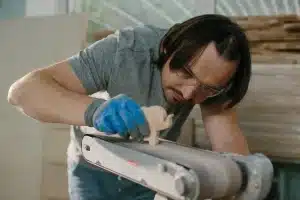The Fascinating World of Toy Manufacturing and Production Processes
Introduction
Toys have been an integral part of our lives since ancient times, bringing joy and entertainment to people of all ages. However, have you ever wondered what goes on behind the scenes in the toy manufacturing industry? In this article, we will delve into the fascinating world of toy manufacturing and explore the intricate production processes that bring our beloved toys to life.
The Importance of Toy Manufacturing
Toy manufacturing plays a vital role in our society, not only providing entertainment but also aiding in child development and education. Toys stimulate children’s cognitive, physical, and social skills, encouraging creativity and imagination. The industry is constantly evolving, adapting to new technologies and trends to meet the ever-changing demands of consumers.
The Toy Manufacturing Process
The journey of a toy from an initial idea to its final packaging involves a series of meticulous production processes. Let’s take a closer look:
Idea Generation and Design
- Toy manufacturers brainstorm ideas based on market research and consumer preferences.
- Designers create sketches and digital renders to visualize the concept.
- Prototypes are developed to test functionality and appeal.
Materials Selection
- The choice of materials depends on the toy’s purpose, safety requirements, and durability.
- Common materials used include plastic, wood, metal, fabric, and various types of polymers.
Manufacturing Processes
- Injection molding: The most common technique for mass-producing plastic toys.
- Die-casting: Used for metal toys, where molten metal is injected into a mold to create the desired shape.
- Rotational molding: Suitable for large and hollow toys, such as action figures and playsets.
- Assembly: Individual toy components are meticulously put together by skilled workers or automated machinery.
Quality Control
- To ensure safety and compliance with regulations, toys undergo rigorous quality control checks and testing.
- This includes examinations for structural integrity, material safety, and small parts safety, among others.
- Thorough inspections are carried out throughout the production process to maintain high standards.
Packaging and Distribution
- Toys are carefully packaged, often with vibrant and eye-catching designs to attract consumers.
- Efficient distribution networks ensure toys reach stores and consumers worldwide in a timely manner.
- Logistics play a crucial role in getting toys from the manufacturing facilities to the hands of eager children.
Key Features of Toy Manufacturing
Now that we have a better understanding of the overall toy manufacturing process, let’s explore some key features that make this industry fascinating:
- Innovative Designs: Toy manufacturers continuously push the boundaries with creative and imaginative designs, keeping children engaged and excited.
- Advanced Technologies: Cutting-edge technologies, such as 3D printing and robotics, are revolutionizing toy manufacturing, allowing for more intricate and detailed toys.
- Safety Regulations: Toy manufacturers adhere to strict safety standards to ensure that toys are free from hazards and compliant with regulations, providing peace of mind to parents.
- Sustainable Practices: The industry is embracing sustainable practices by using eco-friendly materials, reducing waste, and promoting recycling.
- Diversity of Toys: From traditional dolls and action figures to educational STEM toys, the toy manufacturing industry caters to a wide range of interests, encouraging diverse play and learning experiences.
- Collaborations and Licensing: Toy manufacturers often collaborate with popular brands, movies, and TV shows, creating toys that resonate with children and fans alike.
Conclusion
The world of toy manufacturing is a captivating blend of creativity, technology, and meticulous processes. It brings smiles to children’s faces and contributes to their growth and development. By exploring the various stages of toy production and understanding the key features of this industry, we gain a deeper appreciation for the toys that bring joy and laughter to our lives every day.





